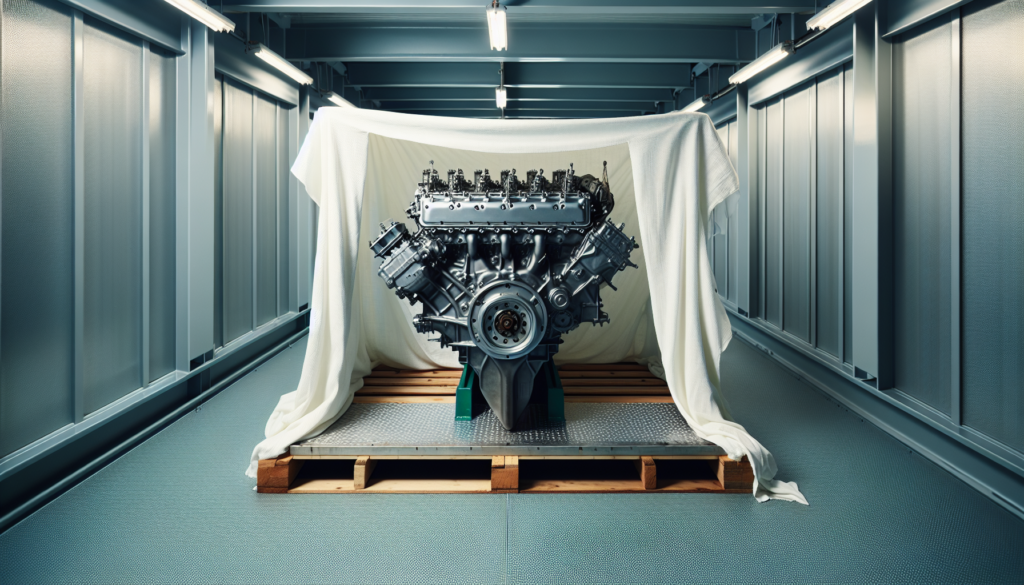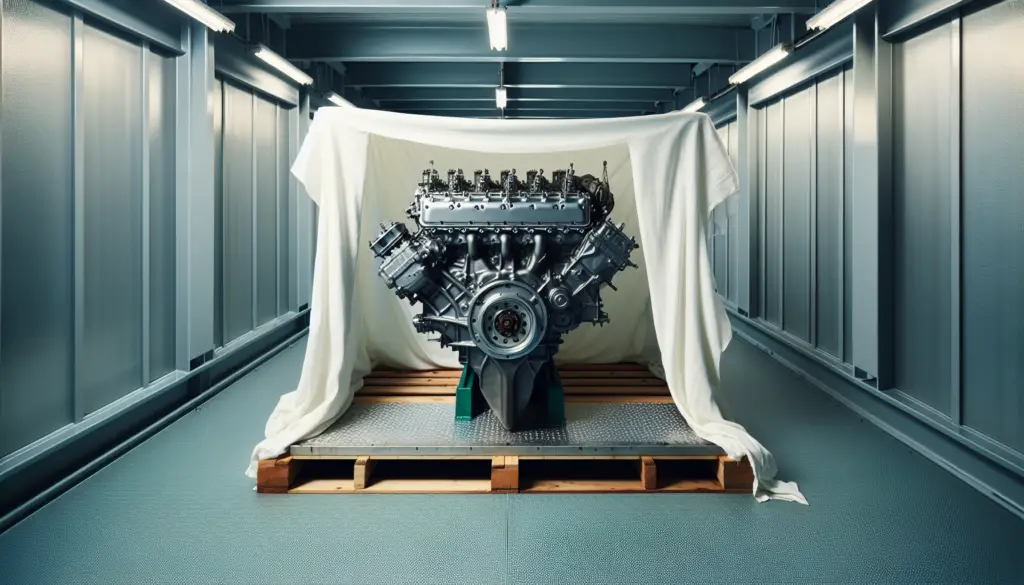Understanding the right way to store and preserve your boat engine during periods of prolonged inactivity can be the difference between smooth sailing and a stressful breakdown. Taking care of your boat, particularly the engine, is crucial for maximum performance and longevity. In “How to Properly Store and Preserve Your Boat Engine During Long Periods of Inactivity”, you’re going to find out the best techniques to ensure that your boat will be ready to hit the water the moment you are. We’re all about keeping your boating memories sweet – no bitter breakdowns here!
Understanding The Importance of Proper Engine Storage
An oft-overlooked aspect of owning a boat is the engine’s long-term maintenance, especially during extended periods of inactivity. While it may seem unnecessary or tedious, dedicated engine storage is a critical facet of preserving your boat’s longevity and performance.
Possible consequences of neglecting engine storage
Negligence in engine storage can result in serious complications. Without proper care, your engine can develop rust and corrosion, both of which can significantly affect its efficiency and damage its components. Additionally, stagnant fluids can break down and clog your engine’s internal systems, leading to potential breakdowns or even full engine failure.
Long-term benefits of proper engine storage
In contrast to that grim scenario, proper engine storage can yield many benefits. With the right care, your engine can maintain peak efficiency for much longer, reducing fuel consumption and emission levels. Additionally, it minimizes the risk of costly repairs and replacements down the line. More importantly, knowing you’ve taken proper care boosts your confidence when setting out for a ride on the waters.
Preparing Your Boat Engine for Storage
The key to proper engine storage starts with diligent preparation. Pre-storage preparation helps identify potential issues and reduces the risk of damage when the engine isn’t in use.
Inspecting the engine for damages and leaks
Begin with a thorough inspection of your engine, looking out for any leaks, cracks, or other damage. It’s crucial to resolve these issues before storing the engine, as they could worsen over time.
Running the engine to operating temperature
Next, run your engine to reach its operating temperature. It helps burn off any condensation within the engine, minimizing the risk of rust.
Draining all the fluids
It’s also vital to drain all engine fluids like engine oil and coolant as they may become corrosive when left stagnant.
Cleaning the engine and its components
Lastly, clean the engine and its components thoroughly. Dirt and grime can cause corrosion over time, and cleaning helps mitigate that.

Choosing the Right Engine Oil
Engine oil plays a significant role in maintaining your engine’s performance.
Importance of using the right oil
The right oil will provide the necessary lubrication, reduce wear and tear, and protect against rust and corrosion. On the other hand, using inappropriate oil can prove detrimental, affecting the efficiency and lifespan of your engine.
Things to consider when choosing engine oil
When it comes to choosing engine oil, always consider your manufacturer’s recommendations. Also, pay attention to viscosity ratings, the oil’s resistances to flow, and temperature conditions, as different oils work better under specific temperatures.
Proper oil change procedure
Always ensure you follow the proper oil changing procedure. Completely drain the old oil, replace the oil filter, and then refill with the new oil.
Fuel System Preservation
Maintaining the fuel system is just as vital for your engine’s longevity.
Importance of maintaining the fuel system
A properly maintained fuel system lessens the chances of complications such as fouled spark plugs and carburetor damage. It also aids in keeping your engine running smoothly.
Proper fuel treatment and use of stabilizers
Treat the fuel system with a fuel stabilizer. It helps to prevent gum and varnish buildup in the fuel system, which can clog the engine.
Tips to prevent fuel system damage
To avoid damage, always refill the fuel tank before storing to minimize air that can foster condensation. Also, ensure all fuel filters are clean and unblocked.

Cleaning and Lubricating the Engine Components
Keeping the engine clean and well-lubricated is a crucial aspect of long-term storage and maintenance.
Proper engine washing procedure
Utilize an engine degreaser and hot water to clean the engine and its parts. After cleaning, enable a thorough drying to deter rust formation.
Delivery and use of lubricants
Lubricants are necessary to keep moving parts from grinding against each other, causing wear. Remember to adequately lubricate all the hinges, locks, and other metal parts.
Protecting the engine with anti-rust treatments
Apply an anti-rust spray to protect against corrosion, which can lead to unnecessary wear and tear.
Electrical System Care
Your boat’s electrical system needs special attention during storage.
Checking and cleaning electrical connections
Inspect all connections for indications of corrosion or wear. Also, ensure all connections are clean and tight.
Battery maintenance tips
When storing your boat, it’s best to disconnect the battery and store it in a cool, dry place. Also, remember to charge the battery at least every two months to maintain its lifespan.
Potential issues with neglected electrical systems
If neglected, the electrical system may face myriad problems ranging from corroded connections to a failed battery, so regular care is vital.

Guarding Against Moisture and Corrosion
Moisture and corrosion are two of the greatest threats to your engine during long-term storage.
Identify spots prone to corrosion
Areas prone to corrosion usually are hidden joints or crevices. Check for these places and apply protective treatments.
Using moisture fighters & Corrosion inhibitors
Consider using moisture absorbers to minimize humidity inside your boat and promote dry conditions in engine compartments. Use corrosion inhibitor sprays to provide an extra layer of protection against corrosion.
Inspecting and preparing for the environmental factors
Anticipate the conditions your boat will face in storage. If it’ll be subjected to a lot of moisture or severe temperatures, take appropriate preventive measures.
Proper Storage Techniques
Proper engine storage extends beyond cleaning and preparation.
Choosing the adequate place for storage
Store your boat in a dry, well-ventilated area, away from direct sunlight and severe temperatures. If you can’t store it indoors, invest in a quality boat cover.
The importance of protective coverings
Protective covers help guard against UV rays, dust, rain, and other elements that may cause damage.
Additional precautions for outdoor storage
If stored outdoors, be on guard for insects, rodents, or birds that can nest in your boat, causing harm.

Routine Maintenance During Inactivity
Regular maintenance during inactivity is necessary to keep your engine in tip-top shape.
Running the engine periodically
Start your engine every so often (every 30-45 days). It allows you to ensure things are still working well and keeps the engine’s internal components from seizing.
Routine checks to perform
Inspect the boat for signs of moisture, pests, UV damage, or any security issues. Also, check oil levels, coolant, battery charge, etc.
Addressing issues during storage
If you identify any problems, make sure to address them promptly to prevent minor issues from turning into major ones.
Ensuring a Smooth Restart
When it’s time to get your boat back on the water, ensure a hassle-free restart.
Documentation of all actions taken during storage
Keeping a detailed record of all the maintenance tasks you’ve done during storage can guide you when restarting. This documentation helps you strategically reverse the storage process.
Re-inspecting the engine before restart
Before the restart, conduct another thorough engine inspection. Check for any issues that might have crept up during storage.
Possible issues & solutions during the initial restart period
You may encounter minor issues like hard starts or weak batteries during the initial restart period. However, with diligent storage practices and proper preparation, these should be few and far between.
Ensuring your boat engine’s longevity and maintaining its performance requires an investment of time and care, particularly during extended periods of inactivity. By adhering to the guidance provided here, you can stave off avoidable engine problems and look forward to many more enjoyable boating experiences.

